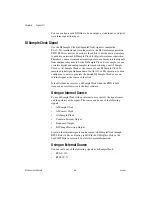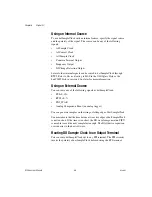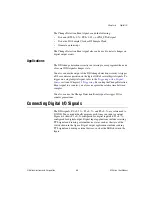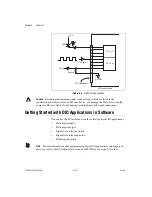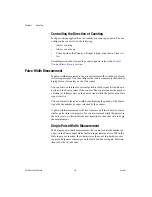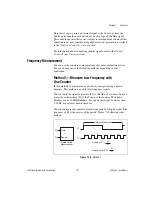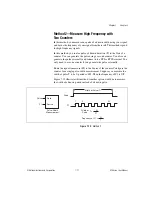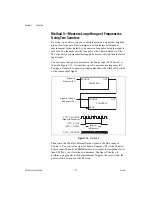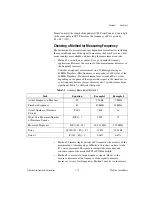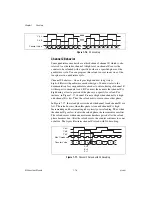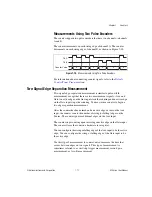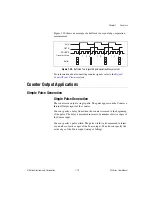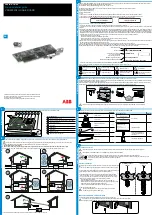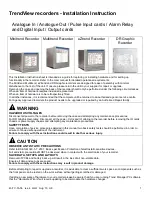
Chapter 7
Counters
7-8
ni.com
Semi-Period Measurement
In semi-period measurements, the counter measures a semi-period on its
Gate input signal after the counter is armed. A semi-period is the time
between any two consecutive edges on the Gate input.
You can route an internal or external periodic clock signal (with a known
period) to the Source input of the counter. The counter counts the number
of rising (or falling) edges occurring on the Source input between
two edges of the Gate signal.
You can calculate the semi-period of the Gate input by multiplying the
period of the Source signal by the number of edges returned by the counter.
Single Semi-Period Measurement
Single semi-period measurement is equivalent to single pulse-width
measurement.
Buffered Semi-Period Measurement
In buffered semi-period measurement, on each edge of the Gate signal, the
counter stores the count in a hardware save register. A DMA controller
transfers the stored values to host memory.
The counter begins counting when it is armed. The arm usually occurs
between edges on the Gate input. So the first value stored in the hardware
save register does not reflect a full semi-period of the Gate input. In most
applications, this first point should be discarded.
Figure 7-9 shows an example of a buffered semi-period measurement.
Figure 7-9.
Buffered Semi-Period Measurement
3
1
2
2
3
1
2
2
3
2
SOURCE
GATE
Counter Value
Buffer
1
3
2
2
1
1
1
3
2
1
2
1
0
2
Counter Armed

